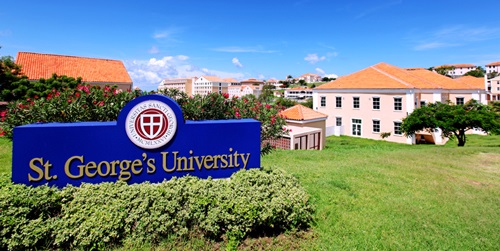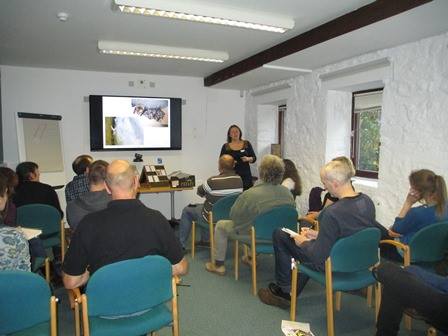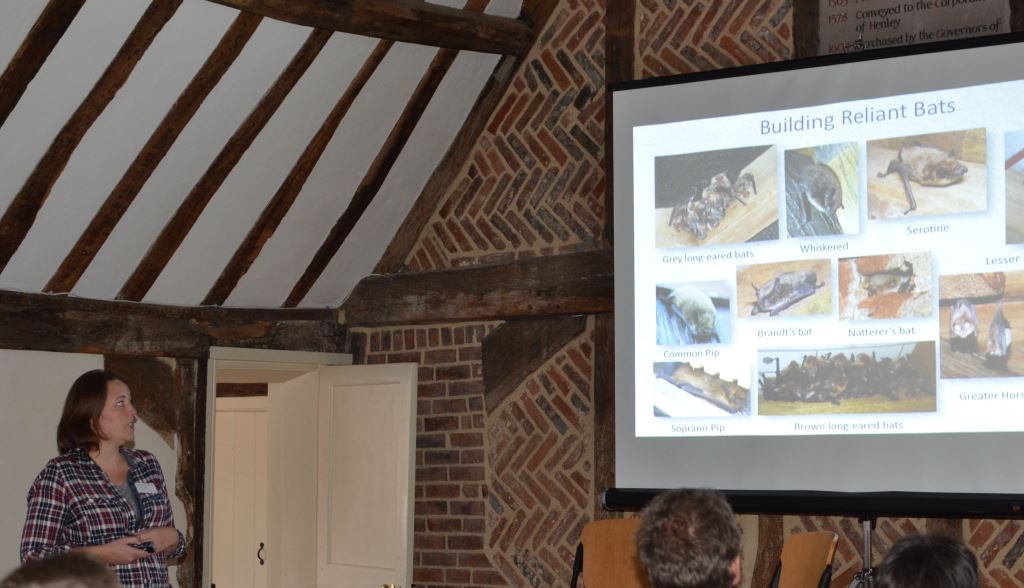Research Engineer Alice Gunn (TSBE Centre & SSE sponsored EngD student) writes about her research work in the Caribbean.

‘I have been extremely lucky these last two weeks to have had the opportunity to swap Whiteknights campus in Reading for that of St George’s University on the Caribbean island of Grenada. Hopefully this marks the beginning of an exciting new research partnership between the University of Reading, the UNFCCC’s Regional Collaboration Centre for the Caribbean, and WINDREF the research institute which hosts them at St George’s University.
St George’s University is primarily a medical institution, however it sees climate change as one of the greatest threats to human health in future years, and as such hosts the UNFCCC. Indeed climate change is already causing damage in the Caribbean SIDS (Small Island Developing States), with extreme weather becoming more common and sea levels beginning to rise. The effects of Hurricane Ivan, which swept across Grenada in 2004, can still be seen today across much of the country in the form of abandoned buildings but also in the impact it has had on its economy, most notably in the country’s nutmeg industry. All of this in a region that has actually contributed very little to the climate change problem.
So what is this first research collaboration and my research all about? My research interests lie in energy system modelling and how the different types of tools can be used to offer insights into the energy policy making process. In the lead up to the COP 21 conference in Paris next week, many countries, including those in the Caribbean, are thinking about their future energy system. I was asked by the UNFCCC to assist them with some of their analysis which they were doing on behalf of the Government of Haiti, looking at their emissions out to 2030 using the energy planning model, LEAP. This was to accompany Haiti’s INDC (Intended Nationally Determined Contribution) submission for COP 21. Countries are invited to submit their INDCs ahead of the conference which outline what actions they intend on implementing and its effect on emissions reduction. These will inform the discussions in Paris and any resulting agreements.
I also have a vested interest in this and I am taking the opportunity to expand the case study for my own EngD studies. For my research I am using the island of Shetland as a test bed for the different model types which I am creating; coming to Grenada allows me to test how effective these models are on a totally different energy system. Grenada’s energy system remains predominately oil based, however it is beginning to see some growth in distributed PV ownership and solar thermal. There is significant interest in growing the renewable generation contribution due to the high energy prices the people of Grenada face, however challenges remain in designing the corrective incentives for all stakeholders. I hope that some of the modelling I do can play a role in aiding this transition. During my visit I have been busy speaking to many of the stakeholders on the island including the utility company Grenlec, the Minister of Energy and large commercial energy users such as hotel owners and the University’s own energy team to gather data and insights into the future of the system here.
This is an ongoing project which will undoubtedly result in some interesting developments, of which I hope to keep you updated. Stay posted.’













